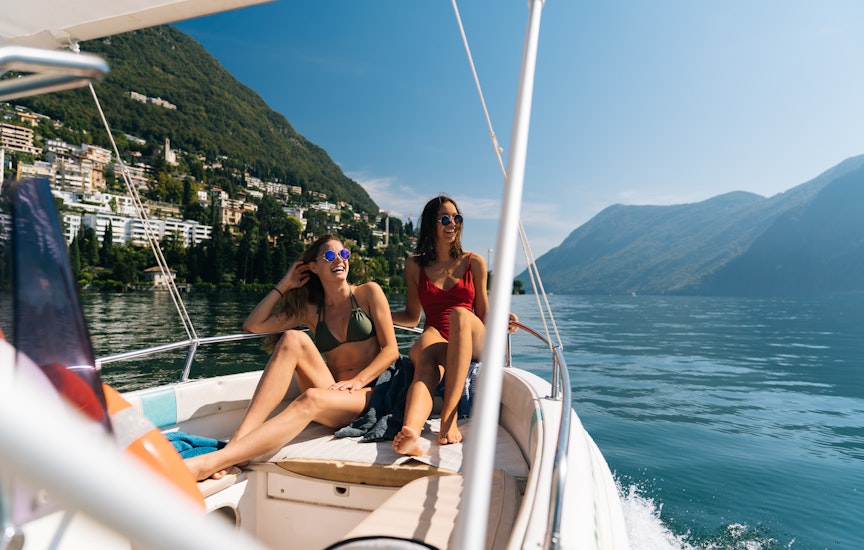

Miller Ilario Garbani roasting corn to make Farina Bóna (good flour) © Sarah Gilbert / Lonely Planet
Ticino – Switzerland’s southernmost, Italian-speaking canton – is a slow food mecca where travellers can enjoy la dolce vita with a side order of Swiss efficiency. The region encourages visitors to take their time in exploring historic lakeside cities like Lugano and Ascona, and delving into spectacular valleys such as Onsernone and Muggio, all whilst sampling its unique gastronomy.
Here are the best ways to savour Ticino’s slow food delights first.

Where to buy fresh produce
Head to Bellinzona market
The year-round Saturday morning market in Bellinzona, Ticino’s capital, is a chance for small producers to showcase their wares. Stalls adorned with the canton’s blue and red flag snake along the historic centre, where you will find an array of the region’s cold cuts, such as mortadella di fegato (pork liver salami), and some of its many cheeses, including aged formaggio d’alpe made from high-altitude cows’ milk.
Visitors can also pick up a slab of the perennially popular bread cake (leftover bread soaked in milk and eggs and baked with dried fruit and nuts) as well as pepper mixed with herbs from the Maggia Valley, and chestnuts in honey, marmalade, marrons glacés (sugar syrup) and more. The smaller market at Lugano sells similar produce on Tuesday and Friday mornings. As they often say in the Ticinese dialect, ‘Sa védum al mercàa’ (‘meet you at the market’).

Buy direct from a farm
Founded in 1930 on the fertile River Maggia delta, the lowest area of Switzerland, Terreni alla Maggia grows a wealth of produce, including corn, wheat and barley. More surprisingly, the farm is also home to Switzerland’s only rice paddy, yielding Riso Nostrano Ticinese used in risotto and beer.
The farm has vineyards as well, which grow Bondola, an indigenous red grape that dates back to the 18th century. The winery also produces award-winning wines like La Lepre, a fruity white merlot that’s a speciality of Ticino. A host of regional specialities are on sale at their one-stop farm shop where a wine tasting with nibbles costs Sfr20 per person.

Revivalist cuisine: what to eat
Farina Bóna
The delicious smell of popcorn wafts from the mill in the village of Vergeletto in the spectacular Onsernone Valley, flanked by thickly forested slopes dotted with stone cottages. Former teacher Ilario Garbani has not only got the mill working again, he’s also behind the renaissance of Farina Bóna, or good flour. Mixed with water, milk or wine, this finely milled toasted corn used to be an indispensable part of the diet for this once poor and inaccessible valley, but by the end of the 1960s production had stopped.
After researching the recipe, Garbani installed a coffee roaster – the secret to its unique flavour – and mills once a week with an ancient stone. Now it’s used in everything from Valona craft beer, to pasta, amaretti and even ice cream. There are tours of the mill every Tuesday for Sfr15 per person, call to book.
Zincarlin
A speciality of the Valle di Muggio is the intense-flavoured zincarlin cheese, only made by one person, Marialuce Valtulini. Crafted from cow’s milk and kneaded into shape by hand, each bell-shaped cheese is bathed in white wine daily for two months to keep the rind soft. It then wrinkles as it matures. The age-old cheese had almost died out when Valtulini began to revive it using a recipe handed down by her mother. Now she’s given it a contemporary twist, using Gin Bisbino instead of white wine to create Gincarlin, perfect with risotto.

Gin Bisbino
Hailing from the Valle di Muggio, Ticino’s southernmost valley, the canton’s first gin was the brainchild of four friends. After wrestling with the recipe they settled on seven herbs, including melissa, coriander and one secret ingredient, all plucked from their terraced garden in the village of Sagno on the slopes of Mount Bisbino.
They took over a grappa distillery, the region’s more traditional tipple, and the result is a 100% organic, mellow dry gin, with light citrus overtones. Everything about it is local – from the ingredients to the design and bottling. Visitors can now try a true Ticinese G&T. Fruity Gazzosa (a type of fizzy lemonade) have been produced here since the 19th century and now tonic has been added to the list. A tour of the gardens and distillery and a tasting costs Sfr30 per person.

Eating out
In the grotto
Grotto restaurants are another unique aspect of Ticinese food culture. Historically, the cool, dry natural caves were used to store perishable foods, and over time morphed into simple eateries where farmers would take a break and share their produce.
At the convivial Grottino Ticenese in Losone, people sit around alfresco granite tables while they serve up local meats and cheeses, risotto and hearty stews, and there’s always a big pot of polenta cooking in a copper pot over the open fire – although these days it is stirred by a machine, rather than by hand.
From the terrace of Grotto san Michele in the walls of Bellinzona’s Castelgrande, there are sweeping views over the city, including its two other ancient castles, Montebello and Sasso Corbaro. Along with a menu of classic dishes, such as soft and creamy cylinders of büsción cheese, visitors should try the gnocchi pan salam (bread gnocchi in a rich salami ragù).

A gastronomy tour of Lugano
Lugano bursts at the belt with enticing culinary prowess and a guided food tour of the lakeside city can be the ultimate indulgence. Start at family-run Gabbani, which still produces its own secret-recipe salami, before savouring a glass of local bubbles at Bernasconi Gastronomia. The fizz should be accompanied by strudel Luganighetta, a Ticinese take on a sausage roll.
Let a white merlot from Bottegone del Vino act as an aperitivi, before trying the catch-of-the-day at a lakeside restaurant like Arté al Lago or Metamorphosis. Finish with a nocino – a bittersweet liqueur made from green walnuts. If there’s any room left, round off with a top-notch gelato from Vanini.













